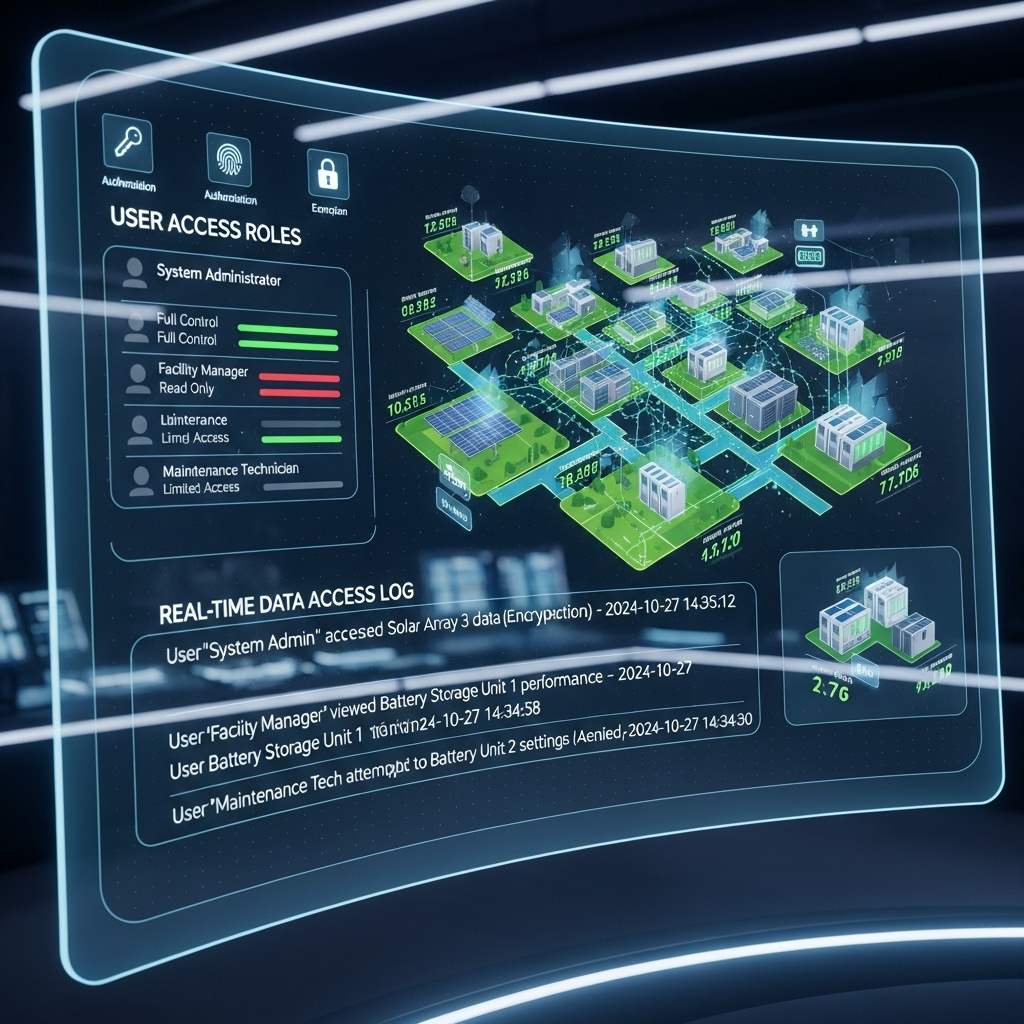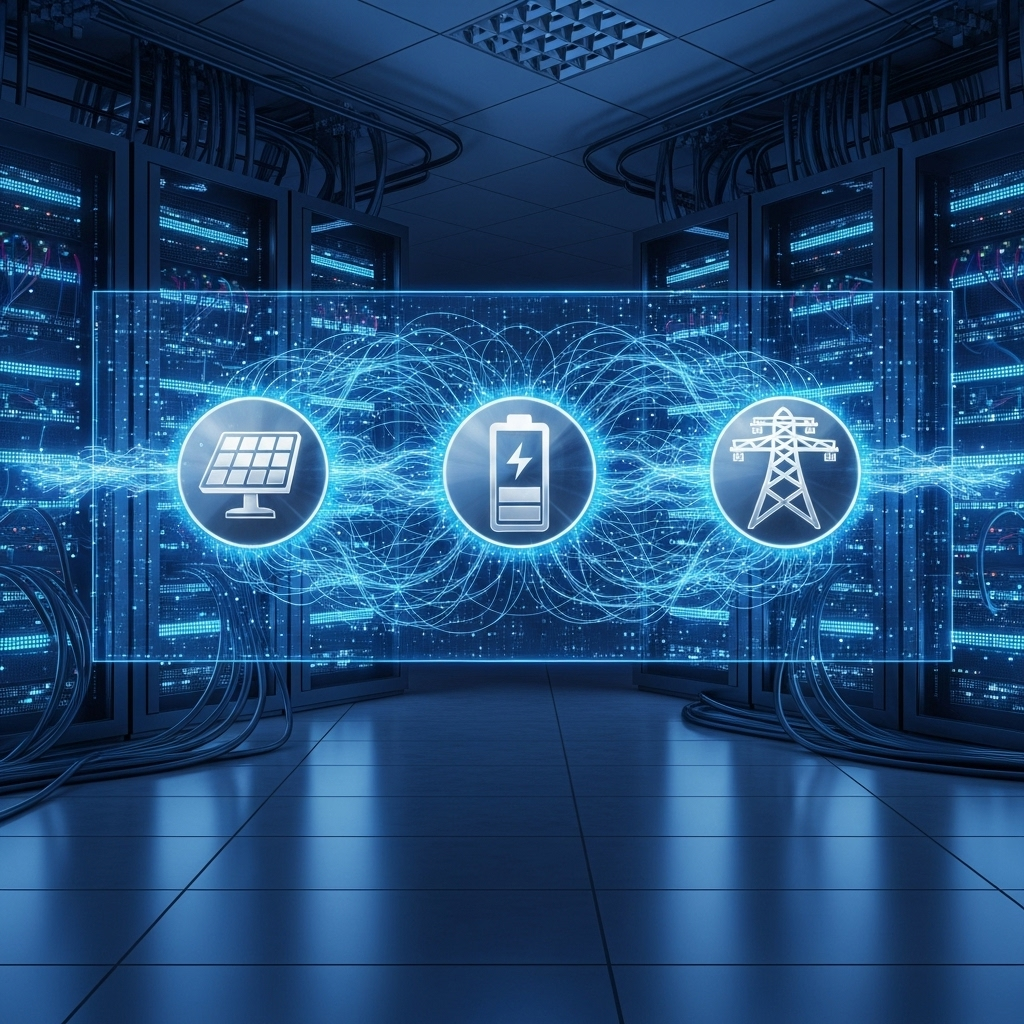The rapid integration of Distributed Energy Resources (DERs), such as solar panels and battery storage systems, is transforming our energy grid. This evolution brings immense benefits but also introduces new cybersecurity vulnerabilities. As regulators introduce stricter data access and privacy rules, a new security approach is necessary. The traditional 'trust but verify' model is no longer sufficient for a decentralized grid. Instead, a zero-trust architecture, founded on the principle of 'never trust, always verify,' provides a robust framework for securing our energy future.
Understanding the Evolving Threat Landscape for DER
As more energy assets connect to the grid, the potential entry points for cyber threats multiply. This expanded attack surface requires a fundamental shift in how we approach security for energy systems.
New Vulnerabilities in a Connected Grid
Every smart inverter, battery system, and energy management controller is a potential target. The U.S. Department of Energy has highlighted that as more DERs connect to the grid with digital communications and controls, the risk of a cyberattack with broader impact rises. These interconnected devices, if not properly secured, can be exploited to manipulate data, disrupt service, or gain unauthorized access to sensitive consumer information. The traditional security model of a strong perimeter is inadequate when the 'perimeter' itself is composed of thousands of distributed devices.
The Regulatory Push for Stronger Cybersecurity
In response to these emerging threats, regulatory bodies are establishing new rules and guidelines. Frameworks like the one from the National Institute of Standards and Technology (NIST) provide a structured approach to managing cybersecurity risks, covering functions like identification, protection, detection, response, and recovery. The energy sector is seeing a move towards mandatory security controls and standardized protocols to ensure that every component of the grid adheres to a high security standard. This regulatory pressure is a key driver for the adoption of more advanced security models like zero-trust.
Core Principles of a Zero-Trust Architecture
A zero-trust model is not a single technology but a strategic approach to cybersecurity built on several key principles. It fundamentally changes the access control philosophy from one of implicit trust to explicit verification.
Never Trust, Always Verify
The foundational principle of zero-trust is that no user or device should be trusted by default, regardless of its location. Every request to access a resource must be treated as if it originates from an untrusted network. This requires strict authentication and authorization for every single connection, effectively eliminating the concept of a trusted internal network versus an untrusted external one.
The Principle of Least Privilege
Under a zero-trust model, users and devices are granted the minimum level of access required to perform their specific functions. This principle of least privilege access ensures that even if an account or device is compromised, the potential damage is contained. The attacker's ability to move laterally within the network and access other resources is severely restricted.
Micro-segmentation
Micro-segmentation involves dividing the network into small, isolated zones. In a DER context, this could mean creating secure segments for individual inverters, battery clusters, or communication hubs. By isolating these components, a breach in one segment does not automatically compromise the entire system. This granular level of control is critical for containing threats and protecting the stability of the wider grid.
A Practical Roadmap for Implementing Zero-Trust for DER
Transitioning to a zero-trust architecture is a methodical process. It requires a clear understanding of your assets, robust identity management, and continuous policy enforcement.
Step 1: Identify and Classify Your DER Assets and Data
The first step is to create a comprehensive inventory of all connected DER assets. This includes inverters, energy storage units, sensors, and control systems. You must understand the role of each device and the type of data it generates and receives. Classifying data based on sensitivity (e.g., operational control signals vs. historical performance data) helps in applying appropriate security policies.
Step 2: Implement Strong Identity and Access Management (IAM)
A robust IAM system is the cornerstone of zero-trust. This involves implementing multi-factor authentication (MFA) for all users and devices attempting to access the network. Role-based access control (RBAC) ensures that individuals and systems only have permissions relevant to their roles. For DER, this means a technician's credentials should not grant access to billing information, and a solar inverter should not be able to issue commands to a battery system without explicit authorization.
Step 3: Enforce Policies and Monitor Continuously
A zero-trust architecture relies on a dynamic policy engine to grant or deny access. These policies should be based on real-time signals, including user identity, device health, location, and the specific resource being requested. Continuous monitoring of network traffic and device behavior is essential to detect anomalies and potential threats. This proactive approach allows for rapid response to security incidents, minimizing potential impact.
The Broader Impact of Zero-Trust on Energy Systems
Adopting a zero-trust framework extends beyond preventing cyberattacks. It builds a foundation for a more resilient, reliable, and trustworthy decentralized energy grid.
Enhancing Grid Resilience and Stability
By containing threats through micro-segmentation and strict access controls, a zero-trust model enhances the overall resilience of the power grid. A localized compromise on a single DER unit or a small group of devices can be isolated before it cascades into a widespread disruption. This is crucial as utilities become more reliant on DERs for grid stability and ancillary services.
Building Consumer Trust and Ensuring Data Privacy
As smart homes and energy management systems become more common, protecting consumer data is paramount. Implementing a zero-trust framework demonstrates a strong commitment to data privacy, which can build significant trust with customers. Ensuring that personal energy consumption and generation data is secure from unauthorized access is not just a regulatory requirement but a critical component of customer relations.
Integrating Performance with Security
A secure system is inherently more reliable. Accurate, untampered data is vital for optimizing the performance of energy assets. Secure data access ensures that the information used for performance monitoring and control is trustworthy. For a comprehensive overview of key performance indicators in energy storage, the ultimate reference on solar storage performance offers valuable details on efficiency and operational reliability.
Moving Towards a Secure Energy Future
The proliferation of DERs is an unstoppable and positive trend, but it demands a parallel evolution in our cybersecurity strategies. Implementing zero-trust data access is not merely a technical upgrade; it is a strategic imperative to protect our critical energy infrastructure. This approach moves away from outdated perimeter-based defenses and builds security directly around the data and assets that matter most. By adopting a 'never trust, always verify' mindset, the energy industry can foster innovation while ensuring a secure, resilient, and reliable power grid for generations to come.
Disclaimer: This information is for educational purposes only and does not constitute legal or investment advice. You should consult with a qualified professional for advice tailored to your specific situation.
Frequently Asked Questions
What is zero-trust data access?
Zero-trust is a security model based on the principle of 'never trust, always verify.' It requires strict identity verification for every person and device trying to access resources on a private network, regardless of whether they are sitting inside or outside of the network perimeter.
Why is zero-trust important for DER?
As DERs like solar panels and batteries become more connected to the grid, they create new potential entry points for cyberattacks. A zero-trust framework protects these critical assets by isolating them and ensuring that only authenticated and authorized users and devices can communicate with them, enhancing overall grid security.
Is implementing zero-trust a one-time project?
No, implementing zero-trust is an ongoing process. It involves a strategic shift in security philosophy, continuous monitoring, and adaptation to new threats and technologies. It requires a long-term commitment to maintaining a high level of security.
How does zero-trust differ from traditional firewall-based security?
Traditional security focuses on building a strong perimeter (a 'firewall') to keep threats out. Once inside, users are often trusted by default. Zero-trust assumes that threats can exist both inside and outside the network. It eliminates this implicit trust and continuously verifies every access request.





Leave a comment
All comments are moderated before being published.
This site is protected by hCaptcha and the hCaptcha Privacy Policy and Terms of Service apply.